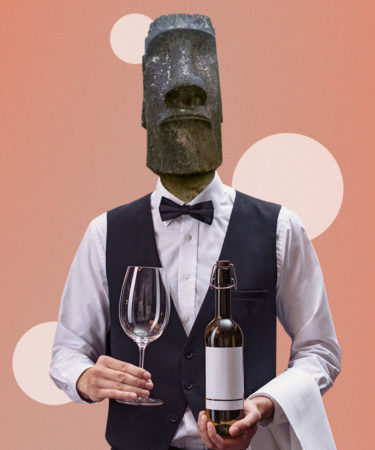Easter Island will soon offer more than ancient, stone-faced statues.
The Polynesian island is about twice the size of Manhattan and attracts more than 100,000 visitors each year according to Food & Wine. While famous for its towering “moai” statues depicting distinct human faces, a new vineyard on the isle may bring smiles to real, human mouths.
Winemaker and agricultural engineer Alvaro Arrigada is leading a team to create a five-acre vineyard in Pu Ika ta’e Hape. This area is located north of the island’s dormant volcano Rano Kau, and presents interesting conditions for new vines.
Arrigada is joined by winemaker Fernando Almeda, historian Cristian Moreno Pakarati, local specialist Poki Tane Hao, and his father “el commandante.” About 7,000 Pinot Noir and Chardonnay vines have already been planted, and are being monitored to see how they fare.
Rapa Nui — the native name for Easter Island — hosts a subtropical clime with volcanic soils that are influenced by the cold Humboldt current. These conditions indicate good things for the new venture, which will build off vines that were initially planted by French settlers.
In the 19th century, settlers arrived from Tahiti and planted vines inside Rano Kau to shield them from the wind. Now, 300 vinestocks have been harvested from these wild vines and are being evaluated for adaptability and growth.
While the vineyard marks a new installation, the centuries of winemaking leading up to this point steep the effort in Rapa Nui’s famous history. For now, early birds who visit the island before it’s ready to say glou-glou can always check out the local brewery, Cervecería Mahina.
